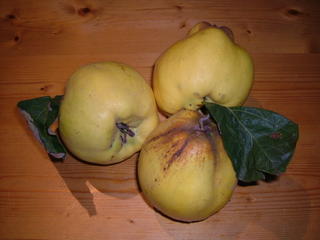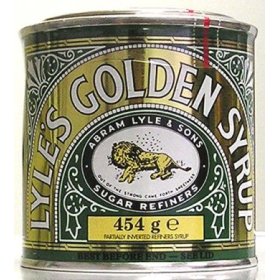 If, like me, you are now drowning in quince jelly (this is not a bad thing, per se, given that it makes a great gift and will keep in its jar for years), you may be looking for something else to do with your excess quinces. I know my parents have a whole stable filled with them, lined up neatly in cardboard crates. Like apples, the fruits will keep well in a cool, dry and dark place – check on them regularly as you would with apples though, because once one goes bad the rest will soon follow unless you remove it and throw it away immediately.
If, like me, you are now drowning in quince jelly (this is not a bad thing, per se, given that it makes a great gift and will keep in its jar for years), you may be looking for something else to do with your excess quinces. I know my parents have a whole stable filled with them, lined up neatly in cardboard crates. Like apples, the fruits will keep well in a cool, dry and dark place – check on them regularly as you would with apples though, because once one goes bad the rest will soon follow unless you remove it and throw it away immediately.
Membrillo, or quince cheese, is something you may have spotted on fashionable cheeseboards. It’s not a cheese at all, but a lovely heavy, sweet gel made from the flesh of the quince boiled down with sugar. It’s a wonderful contrast to salty cheeses like manchego – one of my favourite midnight snacks is simply a hunk sawn off the end of the piece of parmesan that’s always in the fridge, nibbled with a spoonful of quince cheese. When your quince cheese is ready, it will keep almost indefinitely in the fridge. I preserve mine in jars and spoon out chunks – some people prefer to make it in moulds, chill the moulds and turn the finished membrillo out when cold, then keep the pretty blocks wrapped in greaseproof paper and tin foil.
You’ll need:
3 lb quinces
1 lemon
Granulated sugar (see below for measurements)
Water
Peel and core the quinces and cut them into chunks. Quinces are an abominably tough fruit to work with, so make sure your knife is extremely sharp and be sure to protect your fingers from slips. Put the quince pieces in a large saucepan and cover with water, cover with the lid, then simmer very gently for around three hours until the fruit is soft when poked with a fork. It will have turned a lovely lipstick pink.
Drain the pieces and weigh them, and measure out an equal weight of sugar. Put the quince pieces in the food processor and blitz until you have a paste, then combine the paste with the sugar and the juice and zest of the lemon in a saucepan with a thick bottom (an enamelled cast-iron pan like one from Le Creuset is really useful here). Simmer the mixture over a very, very low flame, stirring until the sugar has all dissolved in the quince paste. Continue to simmer gently without a lid, stirring every now and then to make sure the bottom does not catch, for about two hours, until the paste is a deep red-brown and your spoon will stand up in it.
Spoon the quince cheese into sterilised jars and cover the top with a waxed disc before you put the lid on. The jars will keep in the cupboard pretty much indefinitely, but will need to be refrigerated once opened.

